When choosing your first drum set, there are a few things to consider, and some points that can easily be overlooked, but it doesn’t have to be difficult! Here are a few simple guidelines to help you make a decision you won’t regret.
What’s in a drum set?
When choosing your first drum set- especially if you’re considering buying used- it’s important to be familiar with its components. The most essential elements of the drum set- for all music that uses it- are the snare, the bass drum, and the hi-hat (for brevity’s sake, I’ll leave explanations of each of these instruments to other posts). These form the core of most drumming. Beyond that, two or three tom-toms (including rack toms and floor toms) are typical, and many more are possible, as well as the ride cymbal, crash cymbal(s), and other types of accent cymbals. This leads us to my next point:
Keep it simple!
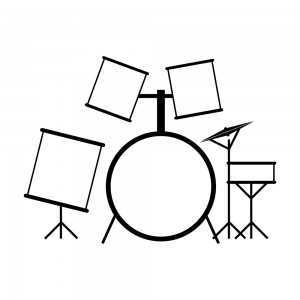 Many beginning drummers, especially kids and teenagers, are entranced by the enormous drum sets employed by many rock drummers. However, having a large number of tom-toms, cymbals, and other add-ons is very distracting to the beginning drummer, and can hamper the learning of the essentials of the drummer’s palette- it’s very tempting to spend practice time crashing and banging rather than learning to develop a solid, tasteful groove and musical fills. (And it may be useful to note that those drummers with giant sets have people to help move them).
Many beginning drummers, especially kids and teenagers, are entranced by the enormous drum sets employed by many rock drummers. However, having a large number of tom-toms, cymbals, and other add-ons is very distracting to the beginning drummer, and can hamper the learning of the essentials of the drummer’s palette- it’s very tempting to spend practice time crashing and banging rather than learning to develop a solid, tasteful groove and musical fills. (And it may be useful to note that those drummers with giant sets have people to help move them).
[su_box title=”How many ‘pieces’ are there in my set?” box_color=”#691c84″ title_color=”#fefefe” radius=”0″ class=”width: 200px;height: 400px;”]How many ‘pieces’ are there in my set? Drum sets are commonly referred to as being ‘five piece’, ‘six piece’, etc., which can lead to a lot of confusion, especially when choosing your first drum set. In drumming parlance, this number refers only to the number of core drums. In other words, if your set is comprised of a snare, bass, and three toms, it is a five piece set, regardless of how many cymbals and other bits of percussion have been added. Beware of this when buying used, as it is not at all unusual for a seller to (intentionally or not) misrepresent the set they are selling by counting every element- I’ve even seen four piece sets advertised as being ten to fifteen piece because the seller has counted every cymbal, stand, pedal, etc. in that number.[/su_box]
What kind of music are you interested in?
Aside from the size of the set in terms of number of components, drums come in a wide array of sizes, and are constructed of many different materials. These factors affect the sound, volume, and weight of the drums, leading to some general tendencies as to how they are used musically. Simply put, large and heavy drums are more likely to be used in the various genres of rock, while lighter drums are generally more suitable for pop, acoustic, and jazz etc. However, one can learn any of these styles on either extreme of size and weight, and a good teacher will expect the student to study multiple styles, not just the one the student is most interested in at the moment. After all, tastes do change over time, and if the student has an interest in eventually playing professionally, she has to be prepared for just about anything!
Space and volume considerations
The space that you have is of obvious consideration when choosing your first drum set: if you have the whole basement to work with, then no problem, right? However, most of us do not have this luxury, so this will certainly be a factor when choosing the size of the drums you buy. Even a modest set takes up a considerable amount of room. As an example, I play a four piece set of moderate dimensions with just a few cymbals, and it takes up a space roughly 5’ by 6’. Definitely the centerpiece of the room! One can easily see how larger drums (and more pieces) can quickly eat up the space you have to work with.
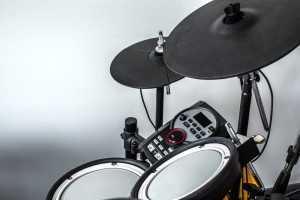
Similarly, larger drums will generally be louder (depending on how hard they are played, of course- but beginning drummers tend to be prone to pretty heavy playing). If you live in an apartment, have roommates, or are a parent wary of living with loud drumming, smaller, lighter drums are clearly recommended when choosing your first drum set.
Space and volume restraints lead many to consider an electronic drum set. Some teachers may discourage this- as the subtleties of achieving good tone on the drums are a bit lost, and they generally do not ‘feel’ like real drums- but I believe it can be a good solution in some situations. They are often quite compact and can be played virtually silently with the use of headphones. Broadly speaking, the more expensive models will yield a more natural feel and more expressive response- the very cheapest are best avoided, as their weaknesses are more than likely to lead to a great deal of frustration. Buying an electronic set would not be my first choice, but if you’re low on space or worried about disturbing the neighbors, it is a solution to consider.
How are drums sold?
Most commonly, drums are sold as what is known as a ‘shell pack’. This is the drums alone, without stands, pedals, cymbals, etc. Some beginner’s sets are sold that include these elements, but expect some parts of this- the cymbals in particular- to be of very inferior quality. These are easily replaced however, and there are numerous beginner’s packages- generally containing the hi-hat cymbals, a ride cymbal, and a crash- on the market at affordable prices. Having said all that, it has been my observation that due to modern manufacturing processes, the quality of entry level drums has risen tremendously since I began playing in the early 80s. Today’s beginning drummer gets a lot more bang for their buck (pun intended)!
And finally…
The throne!
The importance of the drum throne (yes, that’s what we call our seats) cannot be overstated. It must be solid, comfortable, and height adjustable. Using chairs, stools, etc., is bound to put you at an improper height, and should be avoided. An adequately padded and solid (not wobbly) throne (along with proper posture!) will help you avoid back pain, neck pain, and other injuries. Don’t scrimp on the throne!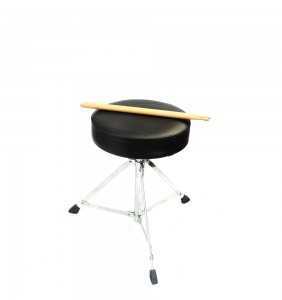
Hope you’ve found these tips for choosing your first drum set helpful, and please feel free to leave a response or ask a question. Good luck on your journey, drummers!

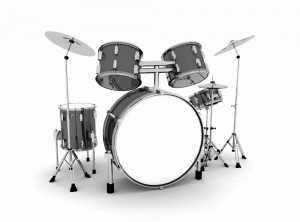
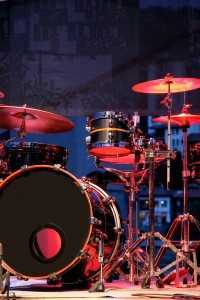

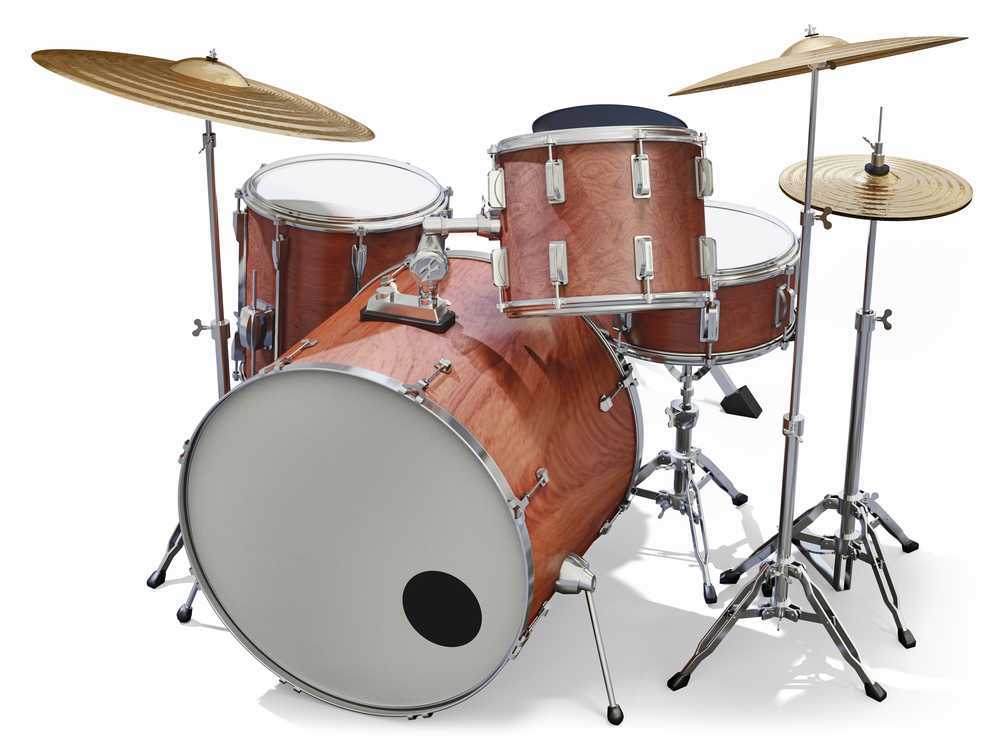
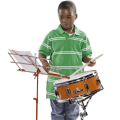
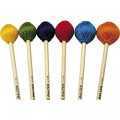

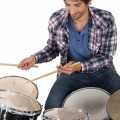

That's right. Choosing a drum set doesn't have to be hard, as long as you know what you're looking for. I also agree with you on selecting a solid drum throne. Drumming is a major cause of back pain in drummers. That's why choosing a throne that has good back support, proper seat height, proper seating space and adjustability feature is crucial.